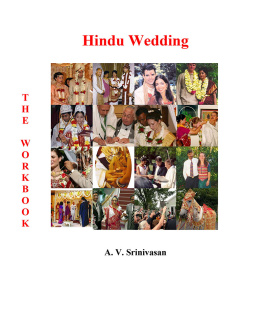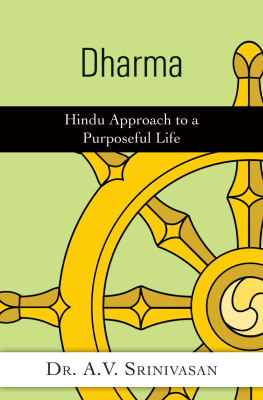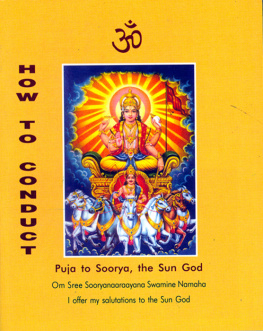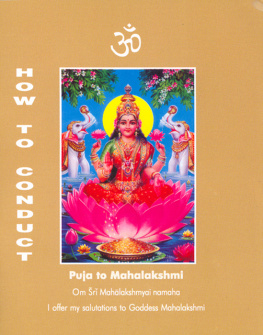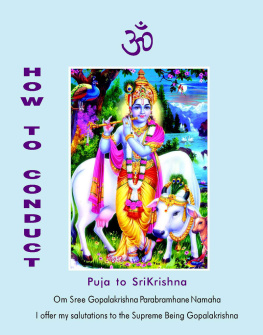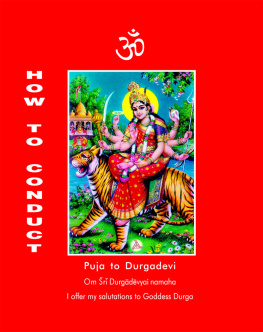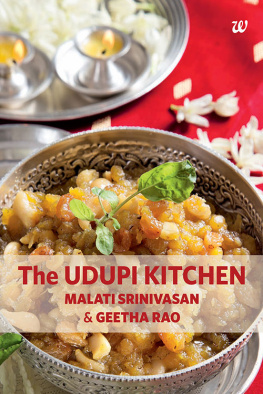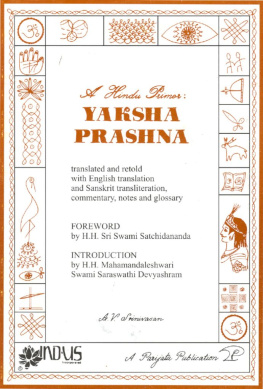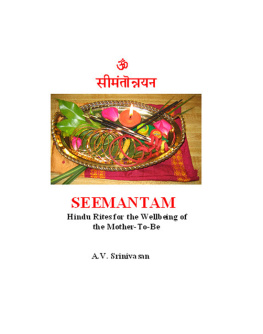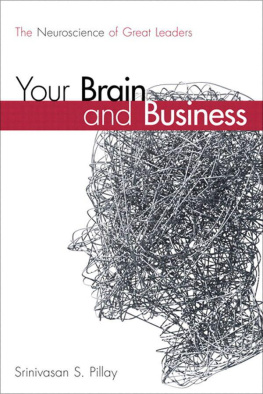Dr. A. V. Srinivasan - Hindu Wedding: The Workbook
Here you can read online Dr. A. V. Srinivasan - Hindu Wedding: The Workbook full text of the book (entire story) in english for free. Download pdf and epub, get meaning, cover and reviews about this ebook. year: 2012, publisher: Dr. A. V. Srinivasan, genre: Home and family. Description of the work, (preface) as well as reviews are available. Best literature library LitArk.com created for fans of good reading and offers a wide selection of genres:
Romance novel
Science fiction
Adventure
Detective
Science
History
Home and family
Prose
Art
Politics
Computer
Non-fiction
Religion
Business
Children
Humor
Choose a favorite category and find really read worthwhile books. Enjoy immersion in the world of imagination, feel the emotions of the characters or learn something new for yourself, make an fascinating discovery.
- Book:Hindu Wedding: The Workbook
- Author:
- Publisher:Dr. A. V. Srinivasan
- Genre:
- Year:2012
- Rating:5 / 5
- Favourites:Add to favourites
- Your mark:
- 100
- 1
- 2
- 3
- 4
- 5
Hindu Wedding: The Workbook: summary, description and annotation
We offer to read an annotation, description, summary or preface (depends on what the author of the book "Hindu Wedding: The Workbook" wrote himself). If you haven't found the necessary information about the book — write in the comments, we will try to find it.
Hindu Wedding: The Workbook — read online for free the complete book (whole text) full work
Below is the text of the book, divided by pages. System saving the place of the last page read, allows you to conveniently read the book "Hindu Wedding: The Workbook" online for free, without having to search again every time where you left off. Put a bookmark, and you can go to the page where you finished reading at any time.
Font size:
Interval:
Bookmark:

Hindu Wedding:
The Workbook
How to Prepare and Plan
for an Authentic Hindu Wedding
The primary purpose of this workbook is to complement the authors earlier publication, The Vedic Wedding: Origins, Tradition and Practice and a later publication Hindu Wedding: The Guide to provide young couples and their parents the background necessary to understand the intent, content and meaning of steps in a basic Hindu wedding ceremony.
The workbook evolved in response to frequently asked questions by couples who visit us after they decide to have a Hindu wedding or an interfaith wedding with a Hindu component in it.
The workbook includes a form for family data essential for use in the Vedic rituals, a materials list, a sample program and a discussion of pujas and ceremonies that may be of interest depending upon individual family traditions.
The mantras, transliterations and translations are not included here but a CD containing chanting of all the mantras used in the ceremony may be ordered directly from either of the following sites:
www.cdbaby.com or www.periplusbooks.com

Hindu Wedding:
The Workbook
How to Prepare and Plan
for an Authentic Hindu Wedding
Dr. A. V. Srinivasan
Periplus Line LLC
2013
Customers who buy this ebook are eligible to receive free postage, within the continental United States, when they order a copy of the author's book
The Hindu Philosophy of Marriage
In the Aranya Parva of that great epic of the Hindus, the Mahabharata, one of the 120 questions the Yaksha asks is:
"kimsvin mitram grhesata:?"
Who is the friend of a householder?
to which the prince Yudhishtira answers:
"bhry mitram grhesata:"
The friend of a householder is his spouse.
According to Hindus, therefore, the basis for marriage is friendship. According to Hindus, this friendship is the understanding, the promise and the commitment that unites a couple. There is absolutely no question about the role of the wife, her importance, her position in this equation that binds them together.
The Hindu Marriage Act of 1955 passed by the Indian Parliament mandates that a Hindu marriage is considered legal only upon completion of the seventh step in the wedding rite known as Saptapadi, when the words spoken in Sanskrit by the couple to each other declare:
sakh saptapad bhava
sakhyamt gamyam
sakhyamt mya:
sakhyamt myta:
With these seven steps may you become my friend.
May I deserve your friendship.
May my friendship make me one with you.
May your friendship make you one with me.
Hindu ancestors went even further: they blessed the bride by saying:
murdhnam patyurrha meaning May your husband keep you on his head" i.e. "Let him respect you".
Hindu religion and culture are rooted in the Vedas composed around 1500 B.C.E. or earlier. The Vedic ideal of marriage, according to Abhinash Chandra Bose (The Call of the Vedas, page 259, Bharatiya Vidya Bhavan, 1970), "is that of perfect monogamy, the life-long companionship of two people. This practice must have been well established, as is evident from the fact that the Vedic rishi seeking comparisons for perfect duality for the twin deities, the Ashvins, gives, along with examples of two eyes, two lips, etc. that of a married couple".
Wedding and Marriage
We shall start with the assumption that marriage is defined as the journey through life together of a loving, committed couple. Marriage is largely a social arrangement between two adults but is governed by laws of the land that offer protection to the essential individualities of the two persons so that the union may continue to be secure and peaceful. Through a solemn ceremony this social arrangement also procures a religious sanction which serves as an umbrella under which the commitments made can be preserved as long as the couple shall live.
A wedding, on the other hand, is an event and a ritual. It is the process that launches a couple into the institution known as marriage or, in religious terms, holy matrimony, and this process is therefore a social-cum-religious set of procedures defined by the cultural, religious and social heritages of the partners.
The Hindu wedding ceremony is based on Vedic traditions and rituals originating in the Rig Veda, the earliest of the four ancient Sanskrit books of knowledge which form the basis of Hinduism. Variations of procedures are to be found in the Yajur, Sama and Atharva Vedas, and the Grihya Strs (domestic rituals). Conjugal union has always been considered an important religious and social celebration, defining the beginning of the second stage of earthly existence, the first, beyond childhood, being that of the student. These rituals, which date back at least 5,000 years, form a dramatic sequence.
A review of publications on wedding rites in English and modern Indian languages confirms the extent of variation dictated by geography and changing times. The question then is which steps to consider when planning a particular modern Hindu wedding. Based on Vedic sources, a desired framework of space and time, and family tradition, the following basic steps meet most needs:
Basic Steps:
 Swagat/ Swagatam or Milni: The meeting and greeting of both families.
Swagat/ Swagatam or Milni: The meeting and greeting of both families.
 Vara Puja: Dialogue between the brides father and the groom.
Vara Puja: Dialogue between the brides father and the groom.
 Jayamala/Jai Mala: Exchange of garlands.
Jayamala/Jai Mala: Exchange of garlands.
 Pravara: Announcement of lineage.
Pravara: Announcement of lineage.
 Kanyadanam: Giving away the bride.
Kanyadanam: Giving away the bride.
 Mangalyadharanam: Tying the mangalasutra.
Mangalyadharanam: Tying the mangalasutra.
 Agni/Homas: Fire rituals.
Agni/Homas: Fire rituals.
 Mangal Phera: Circling the fire.
Mangal Phera: Circling the fire.
 Saptapadi: Seven steps.
Saptapadi: Seven steps.
 Ashirvadam: Blessings.
Ashirvadam: Blessings.
A final program can be developed around this framework. Some steps can be omitted, and some added, e.g. vows, ring exchange, etc. See Additional Rites in the reference books cited.
Basic Steps with Description
 Swagat/ Swagatam or Milni: The meeting and greeting of both families.
Swagat/ Swagatam or Milni: The meeting and greeting of both families.
Preliminary rites to this event can include one or more of the following: Ganesh Puja, Sehra Bandi (turban tying), or a Kashiyatra ceremony for the groom. There may also be a long or an abbreviated Baraat (joyous arrival of the groom, his family and friends with dancing and music riding, for example, a horse, a cart, a car, or on foot.)
At the Swagatam ceremony, the groom and his entourage are greeted, at a predetermined location (the door or gateway to the venue), by the brides parents, siblings, and other relatives, including at least five married ladies carrying plates of fruits, flowers, deepa (lamp), dhoopa (incense), garland for the groom and new clothing if desired. The officiant blesses the groom, and prays for an obstacle-free ceremony.
Next pageFont size:
Interval:
Bookmark:
Similar books «Hindu Wedding: The Workbook»
Look at similar books to Hindu Wedding: The Workbook. We have selected literature similar in name and meaning in the hope of providing readers with more options to find new, interesting, not yet read works.
Discussion, reviews of the book Hindu Wedding: The Workbook and just readers' own opinions. Leave your comments, write what you think about the work, its meaning or the main characters. Specify what exactly you liked and what you didn't like, and why you think so.

